03:08
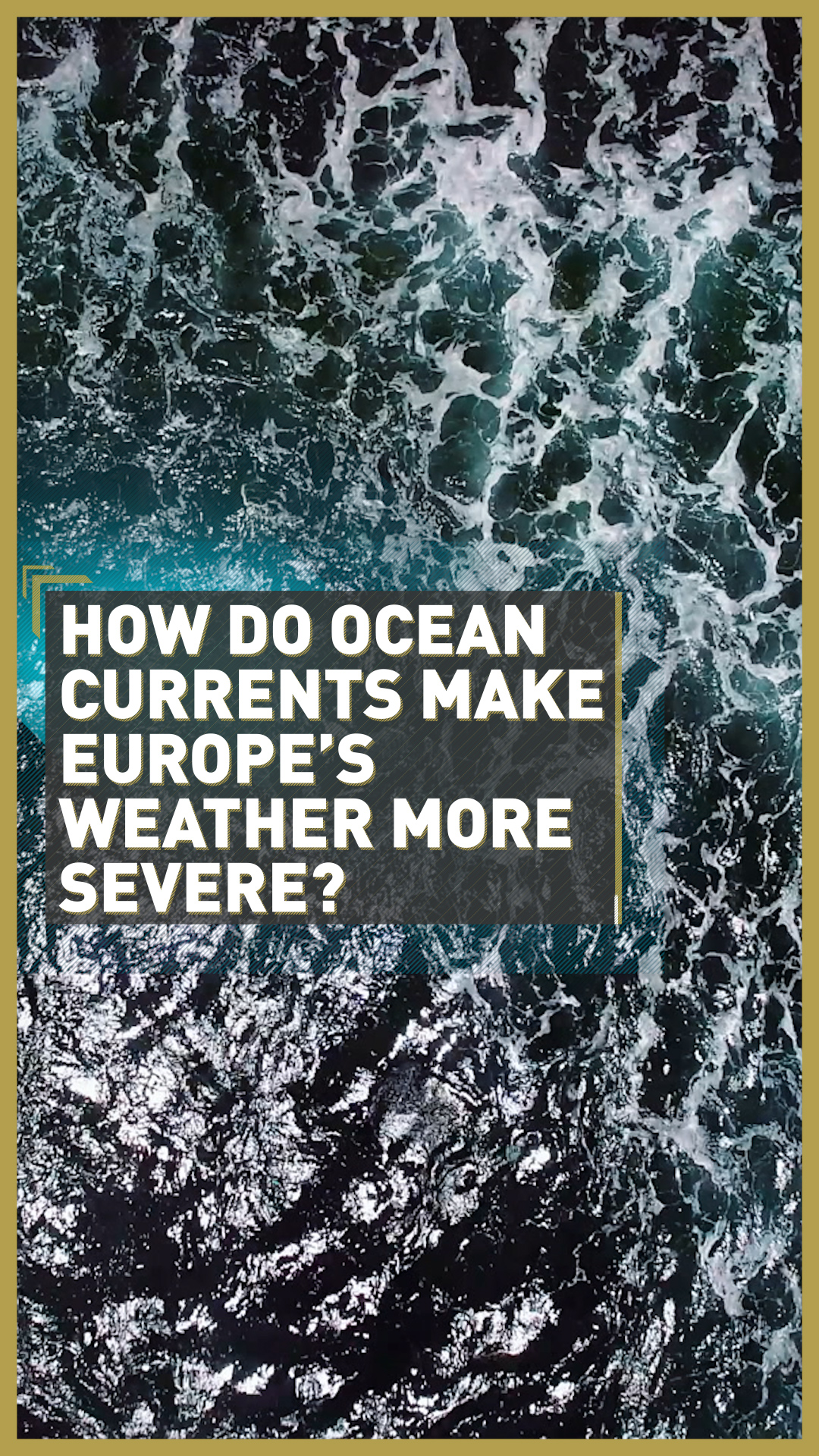
From battering storms to rising sea levels, the smallest changes in the Atlantic Ocean can have big effects on Europe. This is particularly true of the powerful currents that run through the massive body of water and their effect on the continent's weather.
Now, as part of an ongoing international research program to model the relationship between our oceans and the climate crisis, scientists aboard the RRS Discovery have headed to subpolar waters near Iceland to fine-tune the testing of how these currents fluctuate.
The work they are carrying out is part of a vital study into something that specialists have only recently come to understand: that the changes in the Atlantic's currents could make Europe's climate much more severe.
With the United Nations' top climate change body set to use the findings to help inform global policy on mitigating the effects of climate breakdown, trawling the ocean for data couldn't be more important to Europe's future generations.

The currents that run through the North Atlantic have a direct effect on the Europe's weather. /WanRu Chen/Getty Creative/VCG
The currents that run through the North Atlantic have a direct effect on the Europe's weather. /WanRu Chen/Getty Creative/VCG
How do ocean currents keep Europe warm?
The relationship between Europe's climate and the Atlantic stems, in part, from how the ocean's currents carry the sun's heat from the equator towards the Earth's frozen poles.
"These large-scale ocean currents that flow west of the UK and Europe, they bring a lot of warm water from the lower latitudes, from the subtropical Atlantic," explains the National Oceanography Centre's Penny Holliday, the science coordinator of the RRS Discovery expedition.
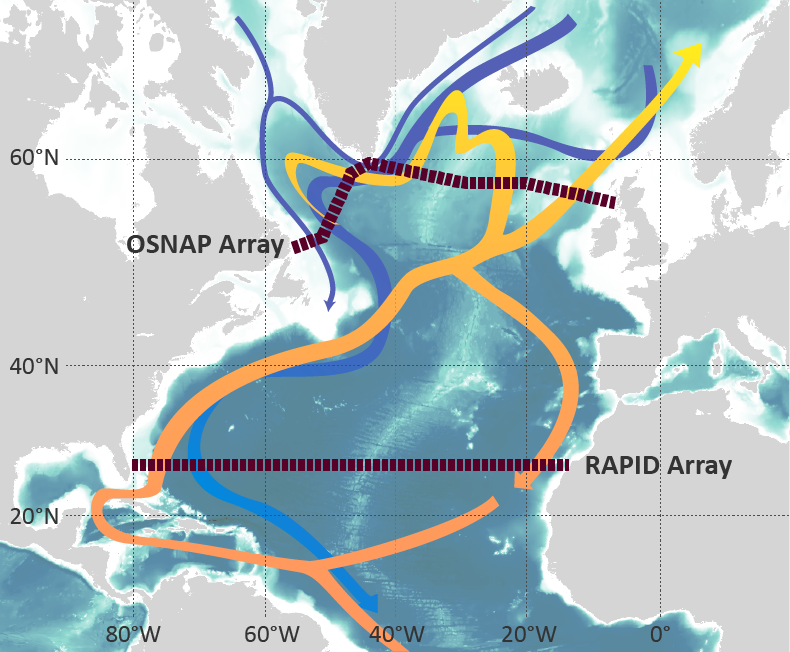
Large-scale ocean currents that flow west of the UK and Europe bring warm water from from the subtropical Atlantic, which in turn, brings warm air to Europe. /OSNAP
Large-scale ocean currents that flow west of the UK and Europe bring warm water from from the subtropical Atlantic, which in turn, brings warm air to Europe. /OSNAP
With the ocean acting like a giant conveyor belt – the water sinks from the surface, cooling down before rising again in a process called "overturning" – she says the heat stored in the water gets released to the air that sits above it.
"That's air that flows across the UK and Europe as part of our weather systems. This process of these large-scale currents heading in this direction bring us warmth," the scientist says. "They keep Europe nice and warm compared with, say, Canada."
But what is less commonly known and understood, she says, is exactly how those changes in the currents happen and what it means for the future of Europe's climate.
Read more: The Danube: Explore the life of a river
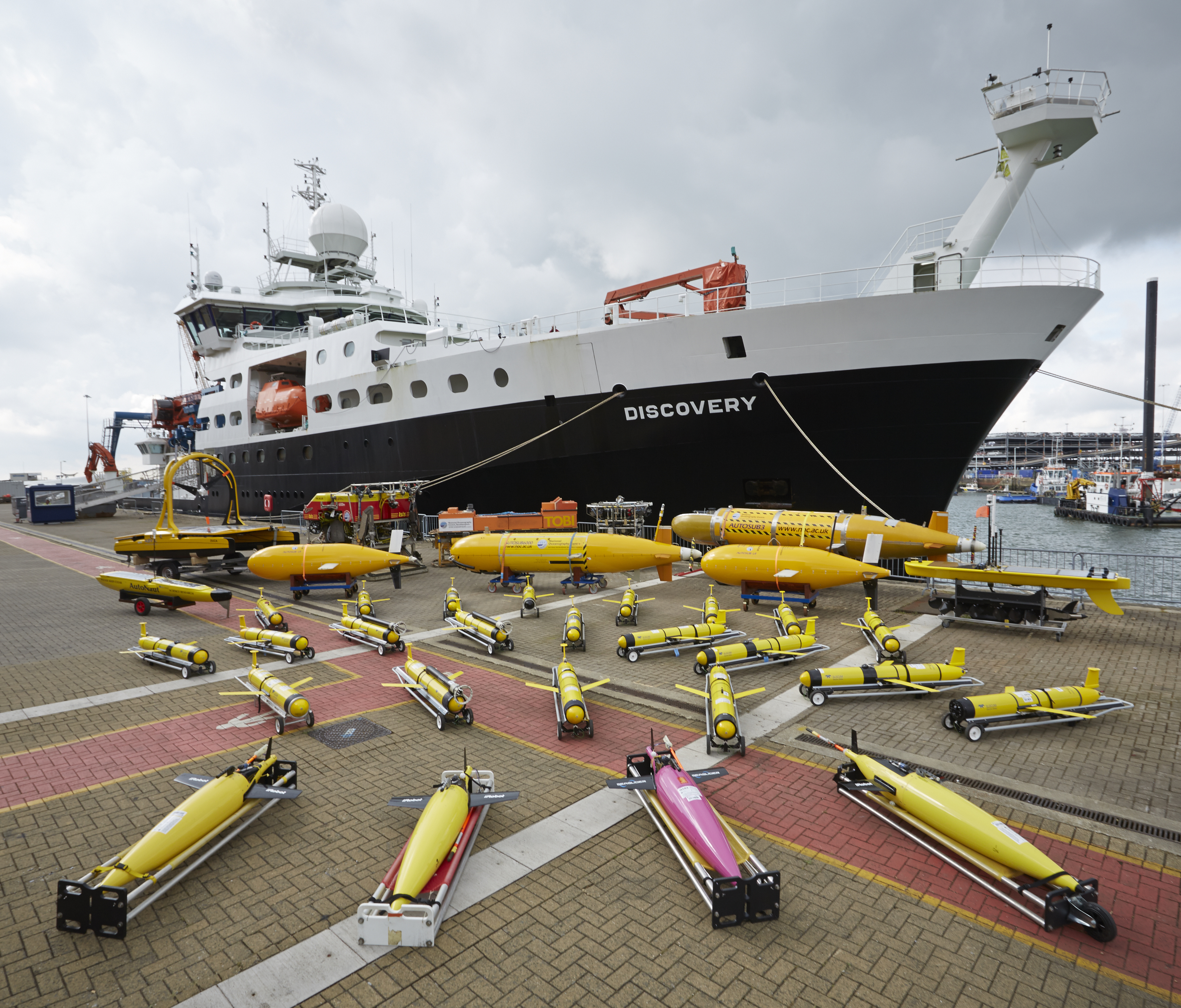
The RRS Discovery team will be recovering and redeploying the OSNAP moorings on their expedition to the Icelandic waters. /OSNAP
The RRS Discovery team will be recovering and redeploying the OSNAP moorings on their expedition to the Icelandic waters. /OSNAP
Testing the waters
This is, in part, because of how difficult it has been to gather solid data from the Atlantic.
"Previously, we might have just visited the area once a year and we'll collect some data," says Holliday, describing the current mission to the Iceland Basin. "That gives us an idea of what the currents look like, but it doesn't tell us much about how they change on quite short timescales."
To prove any oceanographic theories about the currents, scientists would need to set up specialist instruments in the middle of the Atlantic that could provide a constant stream of data. Luckily, this is exactly what has been achieved over the past decade by the Overturning in the Subpolar North Atlantic Programme, or OSNAP.
Part of a large-scale international collaboration between China, the U.S., the UK, Germany, the Netherlands, Canada and France, the project got under way in 2014 and is the first to continuously measure how the ocean circulates in the subpolar region.
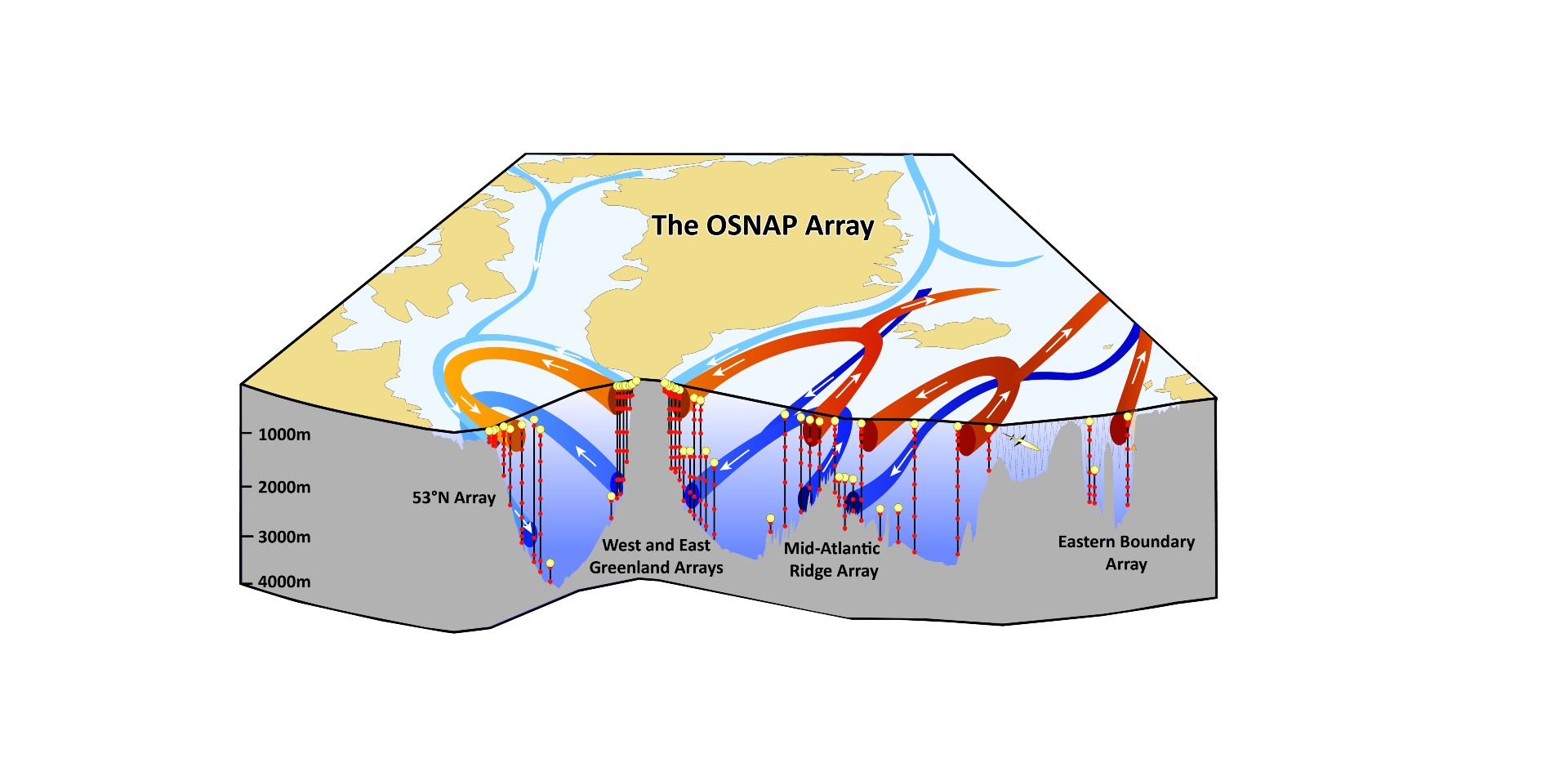
Researchers from the Overturning in the Subpolar North Atlantic Programme (OSNAP) have dotted tools for measuring the currents all the way across the North Atlantic. /OSNAP
Researchers from the Overturning in the Subpolar North Atlantic Programme (OSNAP) have dotted tools for measuring the currents all the way across the North Atlantic. /OSNAP
To do this, OSNAP researchers dotted tools for measuring the currents all the way across the North Atlantic to discover more about large-scale ocean circulation in an ocean that affects the entire world's climate.
These moorings, Holliday explains, consist of a weight at the bottom of the ocean and a string that goes vertically up through the water. Attached are instruments that measure the temperature, salinity, and velocity of the water at different locations.
It is these instruments, in place for two years, that the RRS Discovery team will be recovering and redeploying on their expedition to the Icelandic waters.
"Having sort of a picket fence of all of these across the whole width of the Atlantic Ocean can tell us how these currents are changing day by day," says the scientist. "It helps us realize what the processes that cause the currents are and what causes the changes."
Read more: Research reveals how plant seeds travel across ocean

How do changes in currents make weather in Europe more severe?
Through the groundbreaking research, Holliday explains they discovered that when the amount of heat that's carried into the subpolar North Atlantic changes, it can have a direct impact on how cold our winters are and how warm our summers are.
"We found this relationship between the temperature of the surface of the ocean and the severity of the heat waves in the summer in Europe," she says.
"One of the things that seems a little bit strange to begin with is that if we have a very cold low sea surface temperature in the winter, that can make the subsequent summers actually rather hot in the UK and Europe."
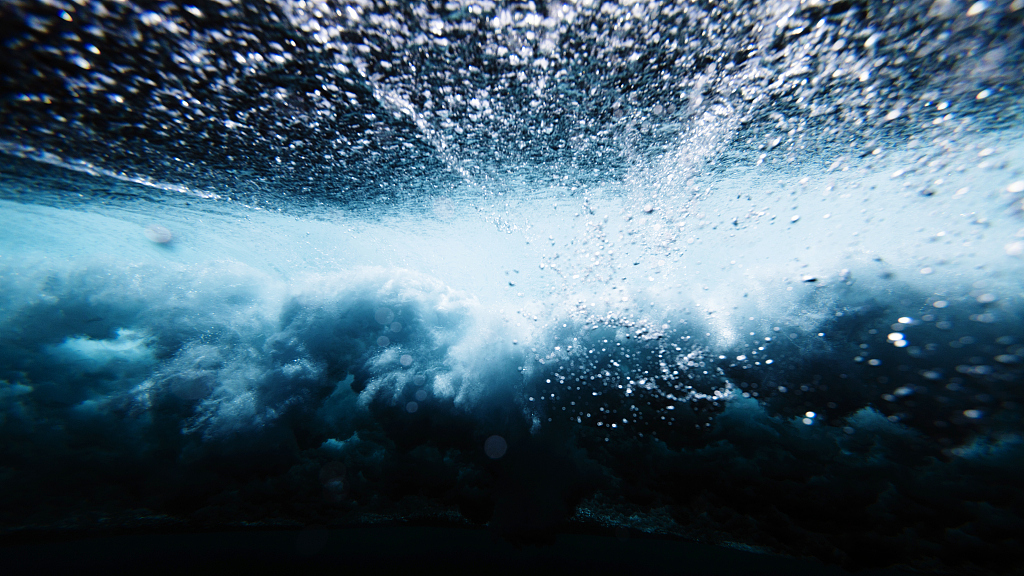
ONSAP's ultimate goal is to accurately represent the processes that control the North Atlantic's currents in climate models to help nations realistically prepare for the various impacts of global heating. /Subman/Getty Creative/VCG
ONSAP's ultimate goal is to accurately represent the processes that control the North Atlantic's currents in climate models to help nations realistically prepare for the various impacts of global heating. /Subman/Getty Creative/VCG
This hints at the overall task of OSNAP – to provide evidence that can guide action on how to fight the impact of climate breakdown.
To give an idea of the global reach of the research, the United Nations Intergovernmental Panel on Climate Change is using the data to inform its global warming reports and consequently, the climate policy of many governments.
"What's important to the UK," says Holliday, "are projections of how severe next winter is going to be, how dry summers are going to be in 10 years' time or what the sea level is going to be like in 100 years' time."
The ultimate goal is to accurately represent these processes in climate models to help nations realistically prepare for the various impacts of global heating: "This experiment is about getting those new insights into how the ocean works so that we can help continually improve those models."
Watch: Making Waves: Researchers simulate high seas indoors
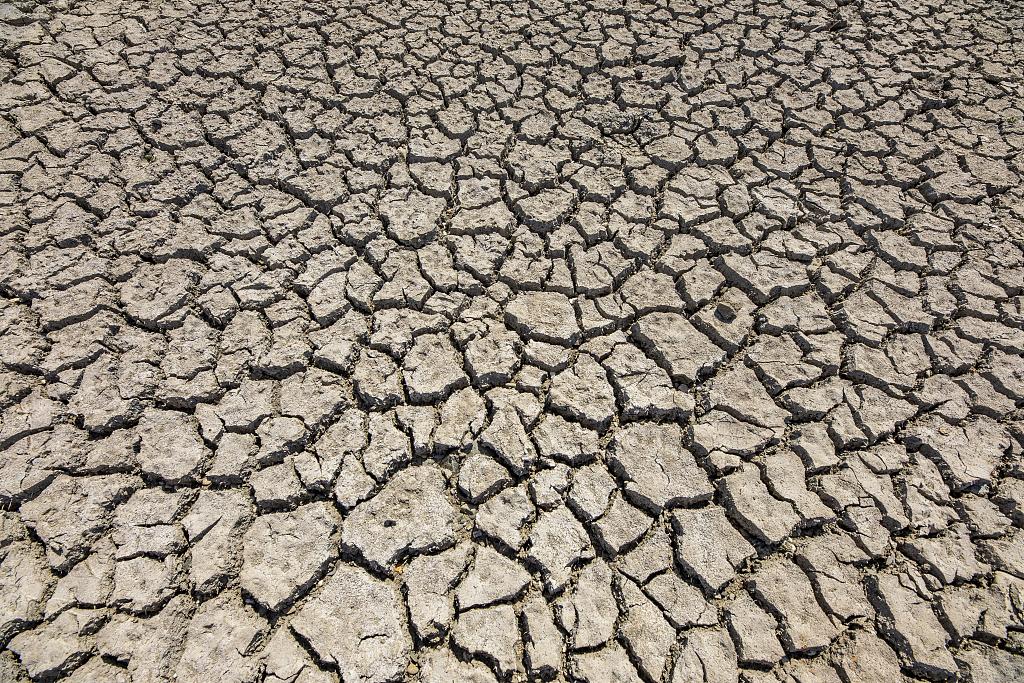
Penny Holliday says the research helps inform projections around topics such as how dry summers are going to be in 10 years' time. /Jochen Tack/Image Broker/VCG
Penny Holliday says the research helps inform projections around topics such as how dry summers are going to be in 10 years' time. /Jochen Tack/Image Broker/VCG
Living with the sea
Those aboard the Discovery will spend three weeks out in the icy waters and, according to Holliday, the operations go on all day and all night to make the most of the crew's time at sea.
But like many industries, the COVID-19 pandemic has taken its toll on the mission. First, the Discovery had to take a smaller crew to make sure there was adequate space in case somebody became unwell.
Then, the launch date from Southampton, originally set for sunny August, was pushed back to October, a much windier time of year.
"When the sea gets rough and you get big waves, the operations on board have to wait until the weather calms down," says Holliday. "It can be frustrating because you have a limited amount of time in which you have a lot of work to do."
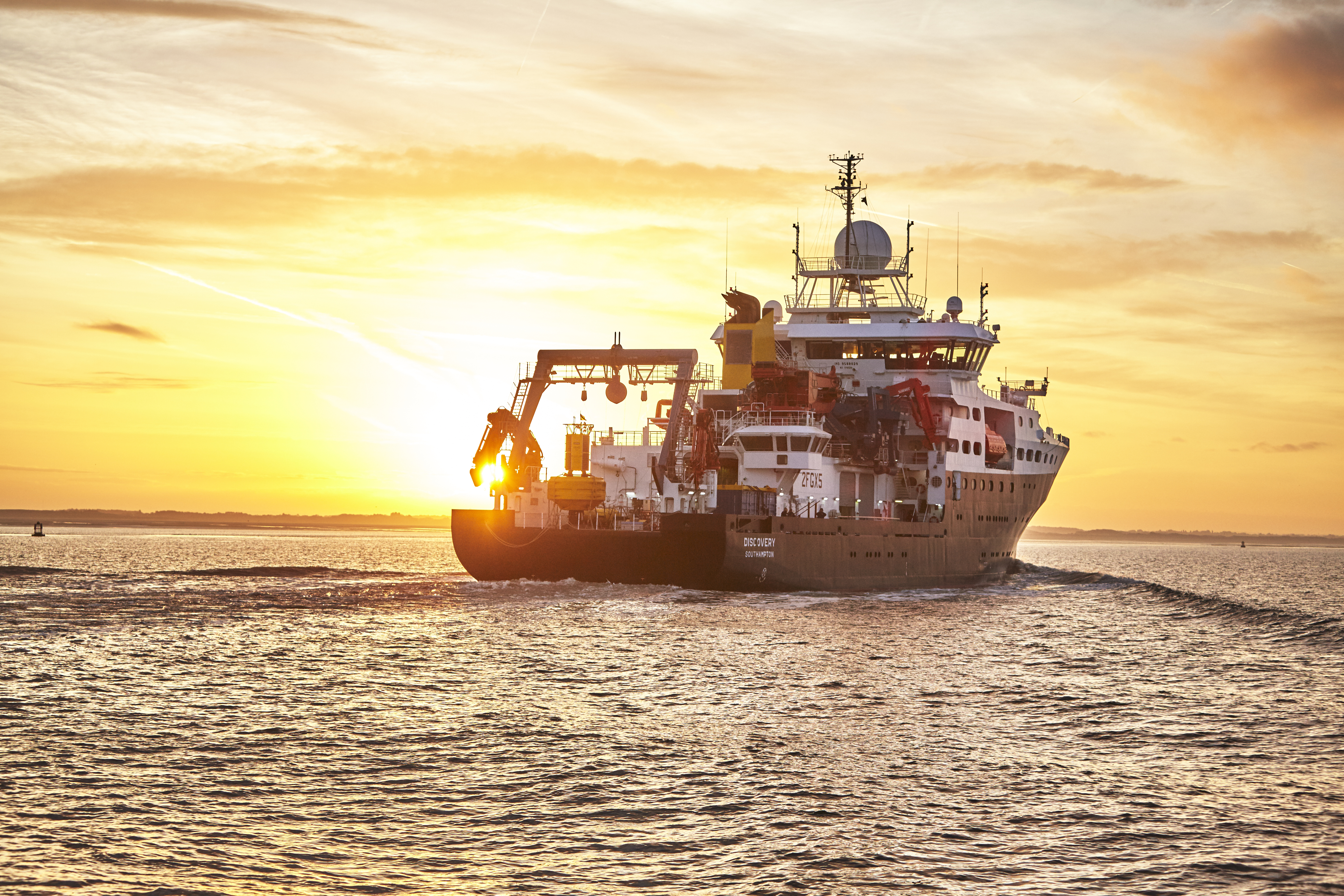
The Discovery crew will also check in on the recently discovered deep-cold-water corals in the Darwin Mounds Marine Protected Area. /OSNAP
The Discovery crew will also check in on the recently discovered deep-cold-water corals in the Darwin Mounds Marine Protected Area. /OSNAP
However, she says conditions for the crew have been fair so far, with the pleasure of working in the North Atlantic, and the odd whale sighting, acting as a strong antidote to any inconveniences: "It's a great privilege to work at sea because the ocean is really beautiful."
The team will also be checking in on the recently discovered deep-cold-water corals in the Darwin Mounds Marine Protected Area, collecting data on how the currents there affect its regrowth following damage by fishing and natural hazards.
"Most people think of coral as being something that grows in shallow tropical seas," says Holliday. "It was really fascinating to discover they had these wonderful ecosystems in the cold, deep water west of the UK."
The team will investigate under what circumstances the slow-growing corals can recover, particularly in light of the 2003 deep sea fishing ban in the area, again, minutely modeling the ties between the secrets of the sea and human activity.
Holliday says the purpose of their large-scale ocean experiments on the Atlantic's currents is to give confidence in the projections that come from the climate models: "By collecting observations of what the real ocean looks like, we understand the physics of the system more in more detail." The more solid the data is, the better the response.
Essentially, the key is to understand that the smallest changes in the ocean can have a profound impact on human life. The task now is to measure them.